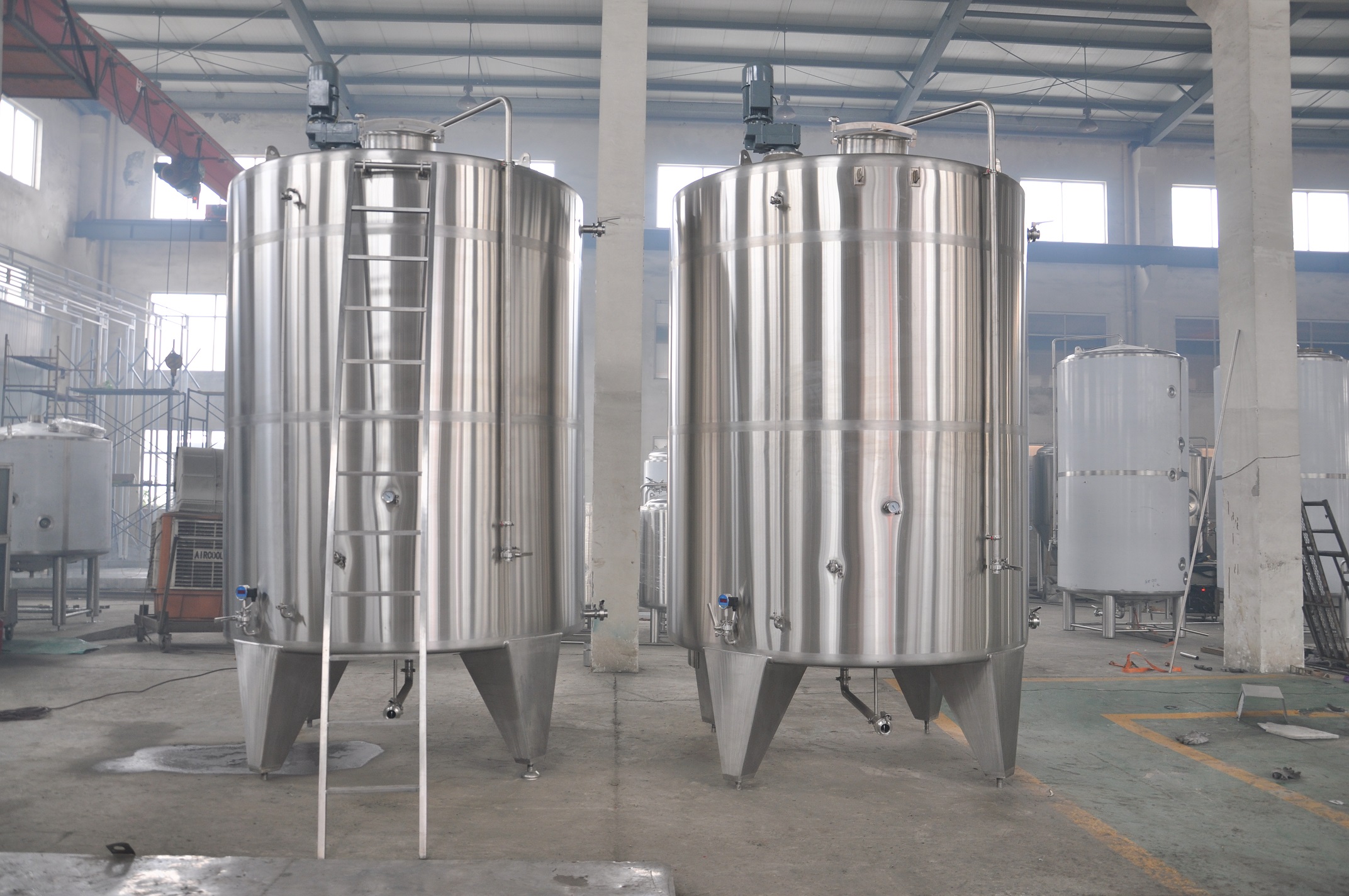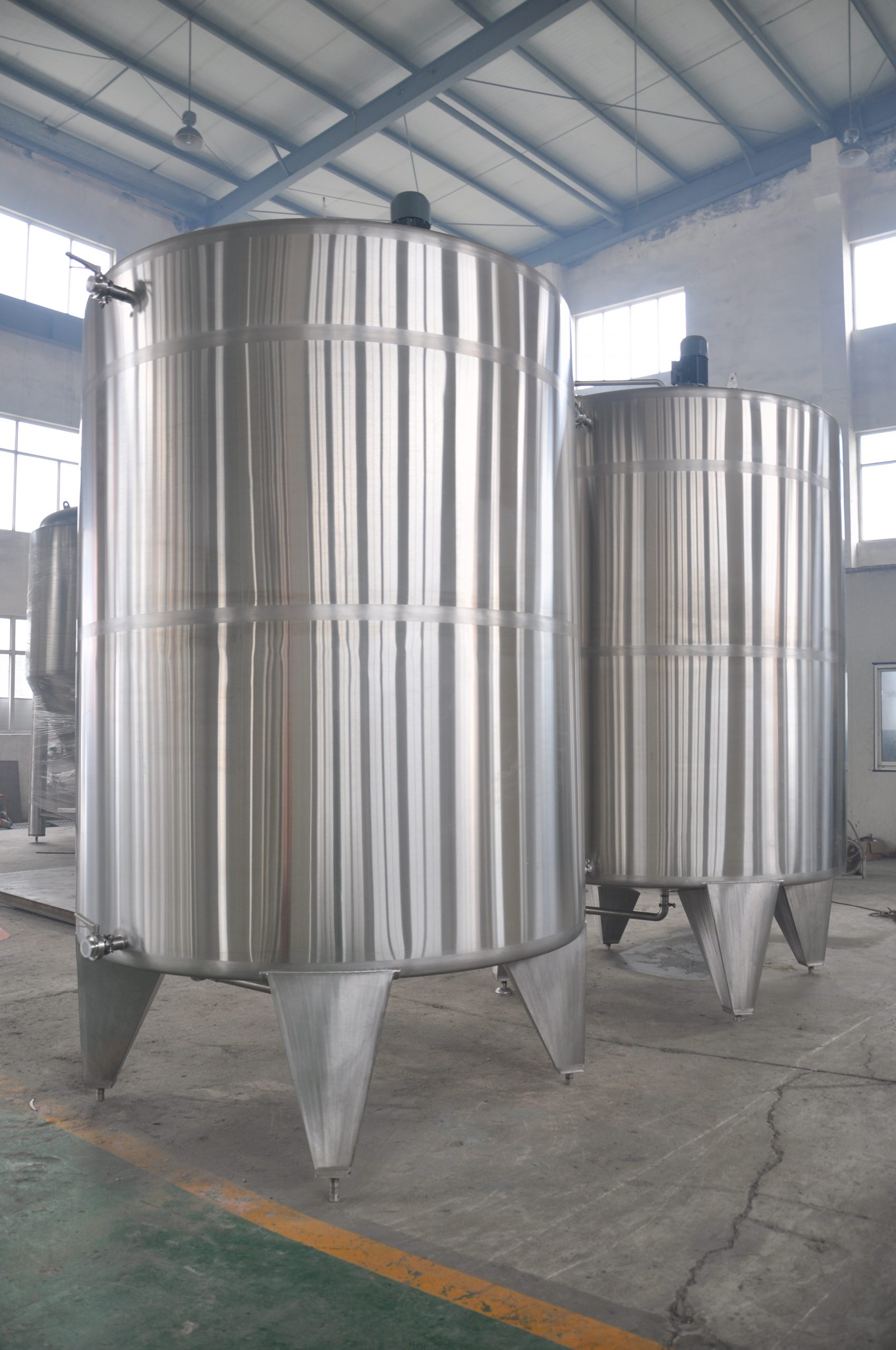
Stainless Steel Mixing Tanks

Stainless steel mixing tanks are commonly used in various industries, including food and beverage, pharmaceuticals, cosmetics, chemicals, and more. These tanks are designed for efficient mixing, blending, and storage of liquids, powders, and other substances. Here are some key features and considerations related to stainless steel mixing tanks:
1.Material: Stainless steel is the preferred material for mixing tanks due to its durability, corrosion resistance, and ease of cleaning. The most common stainless steel grades used are 304 and 316, which are food-grade and suitable for sanitary applications.
2.Design and Construction: Stainless steel mixing tanks come in various designs, including vertical and horizontal orientations. They are typically cylindrical in shape with a dished or flat bottom and a domed or flat top. The tanks may have a single wall or be jacketed for temperature control, allowing for heating or cooling of the contents.
3.Mixing Mechanisms: Mixing tanks can employ various mixing mechanisms to achieve efficient blending, including:
1)Agitators: These are impeller-based mixing systems that use rotating blades or paddles to create turbulent flow and promote mixing.
2)High Shear Mixers: These mixers use high-speed rotating blades or rotors to create intense shearing forces, which are particularly useful for emulsification or dispersion of ingredients.
3)Static Mixers: These are stationary mixing elements positioned within the tank that utilize flow dynamics to achieve mixing.
4.Features and Accessories: Stainless steel mixing tanks can be customized with several features and accessories to suit specific process requirements. These may include:
1)CIP Spray Balls: Spray balls facilitate thorough and efficient cleaning of the tank interior.
2)Ports and Valves: Tanks may have various ports, such as inlet, outlet, sampling, and temperature probe ports, along with valves for control and transfer of fluids.
3)Level and Temperature Sensors: These sensors provide real-time monitoring and control of the tank’s liquid level and temperature.
4)Manways: Large openings with hinged or removable lids for easy access to the tank interior during cleaning, inspection, or maintenance.
5.Heating and Cooling: Some mixing tanks come with jackets or coils to facilitate heating or cooling of the contents. These features allow precise temperature control during processes such as fermentation, pasteurization, or emulsification. Consider the heating or cooling requirements of your specific application when selecting a mixing tank.
6.Safety Features: Incorporate safety features into the design of the mixing tank, such as pressure relief valves, temperature sensors, and proper grounding. Adhere to industry standards and regulations to ensure a safe working environment.
7.Integration with Process Equipment: Consider how the mixing tank integrates with other process equipment, such as pumps, valves, and transfer systems. Compatibility and efficient transfer of ingredients between different stages of the process are essential for seamless operations.
8.Customization and Scalability: Depending on your specific needs, you may require customizations or scalability options for your mixing tank. Work with reputable manufacturers who can accommodate your specific requirements and provide solutions that align with your production goals.
When selecting a stainless steel mixing tank, it’s essential to consider factors like material quality, design features, sanitary considerations, safety features, and compatibility with your specific process requirements. Collaborating with experienced suppliers or manufacturers can help you identify the most suitable mixing tank for your application.




















